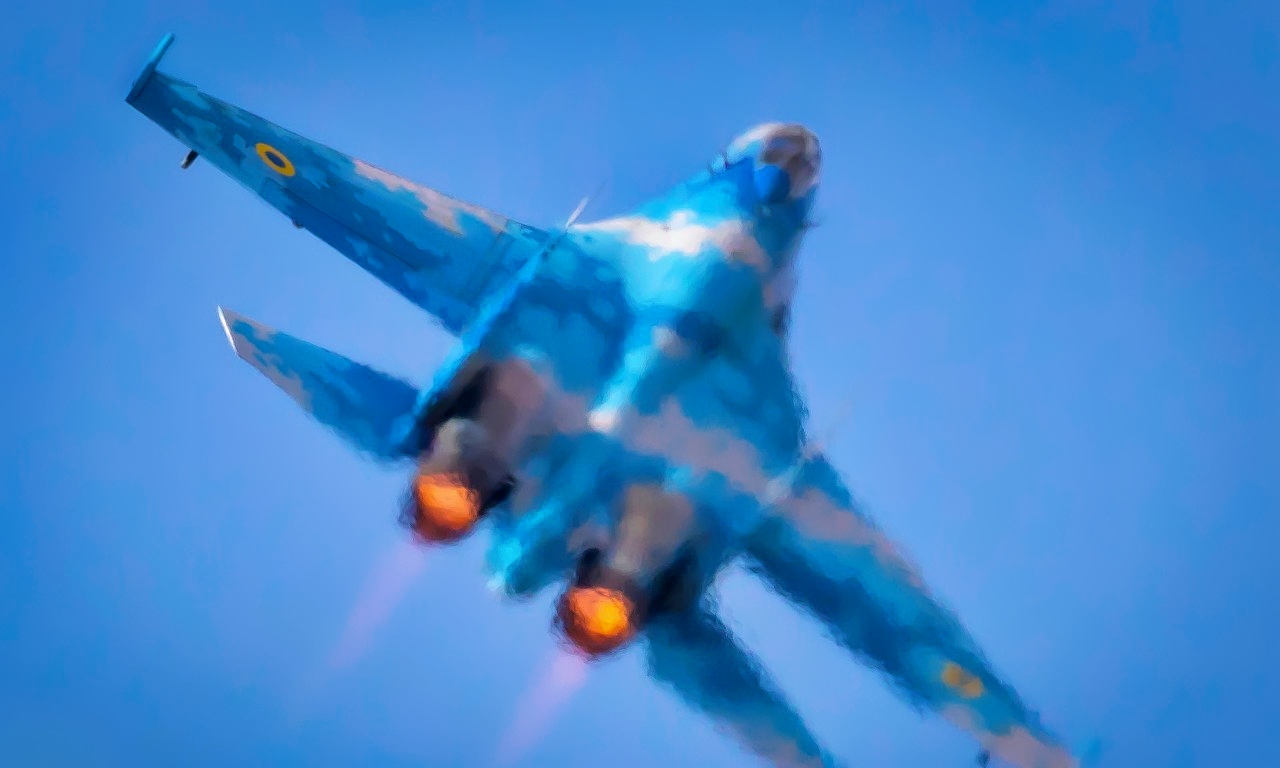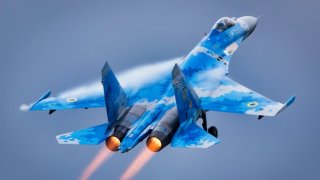Russia's Su-27 Fighter Looks 'Mediocre' In Ukraine War
Despite having superior numbers and technology, Russia's Aerospace Forces have not secured air dominance in Ukraine, partly due to the lackluster performance of the Su-27 Flanker.
Summary: Despite having superior numbers and technology, Russia's Aerospace Forces have not secured air dominance in Ukraine, partly due to the lackluster performance of the Su-27 Flanker. The Su-27, designed to compete with top U.S. fighter jets, has been underwhelming in combat and primarily used for long-range strikes against Ukraine. This operational choice reflects a broader issue within Russia's air force: a lack of training and coordination for complex air operations. Consequently, Russia has failed to establish air superiority, diminishing its military effectiveness in the ongoing conflict. Additionally, Russian Su-27s have engaged in aggressive maneuvers against U.S. drones over the Black Sea.
Russia's Failed Air Superiority in Ukraine: The Role of the Su-27 Flanker
The airspace over Ukraine is still contested. Despite numerical and qualitative superiority over its adversary, the Russian Aerospace Forces have failed to win the skies.
The mediocre performance of the Su-27 Flanker, a mainstay of Russian airpower, has not helped Moscow’s cause.
The Su-27 Flanker in Ukraine
The Su-27 Flanker is a twin-engine, multi-role fighter jet. Sukhoi designed the aircraft as an air superiority fighter jet to take on America’s F-14 Tomcat and F-15 Eagle fighter jets. Subsequent versions of the Su-27 Flanker diversified, and the model can now conduct the full spectrum of air operations, including strategic strike and close air support. In terms of weapons systems, the Flanker can carry several air-to-air and air-to-ground munitions. It also packs a powerful 30mm Gryazev-Shipunov GSh-30-1 autocannon for strafing or dogfights.
Sukhoi built approximately 700 Su-27 fighter jets of all versions, with the majority serving in the Russian military. The Russian Aerospace Forces use several variants of the Su-27 in the war. But their performance in Ukraine has been less than what Moscow would like.
The substandard performance of the Kremlin’s air power doesn’t necessarily have to do with the capabilities of the Su-27. Moscow has mainly used its aircraft for long-range stand-off strikes against Ukrainian urban centers, critical infrastructure, and the energy grid. Armed with cruise missiles and glide bombs, Russian aircraft attack these high-value targets from outside the range of the Ukrainian air defense umbrella.
However, the war has shown that Russia’s air force lacks the training, expertise, and support to conduct large-scale air operations with several aircraft in the air at one time. As a result, it has failed to establish air superiority over the battlefield, thereby limiting the overall effectiveness of the Russian military.

Both the Russian and Ukrainian air forces use the Su-27 Flanker, so the fighter jet has encountered itself in combat. But Russian Su-27s also conduct combat air patrol missions over the Black Sea, and in this capacity they often get close to U.S. and NATO aircraft over international airspace.
Russian Su-27 Flanker Versus U.S. Drone
The Russian fighter jets intentionally tried to take down the American unmanned aerial system. First, they flew over and in front of the drone, dumping fuel to destroy its avionics, sensors, and cameras. When that didn’t work, the Russian aircraft flew in front of the MQ-9 Reaper. With one dangerous maneuver, the Su-27s took out the drone’s propeller and downed it. The drone was completely lost.
About the Author
Stavros Atlamazoglou is a seasoned defense and national security journalist specializing in special operations. A Hellenic Army veteran (national service with the 575th Marine Battalion and Army HQ), he holds a BA from the Johns Hopkins University, an MA from the Johns Hopkins’ School of Advanced International Studies (SAIS). He is pursuing a J.D. at Boston College Law School. His work has been featured in Business Insider, Sandboxx, and SOFREP.
All images are from Shutterstock.


